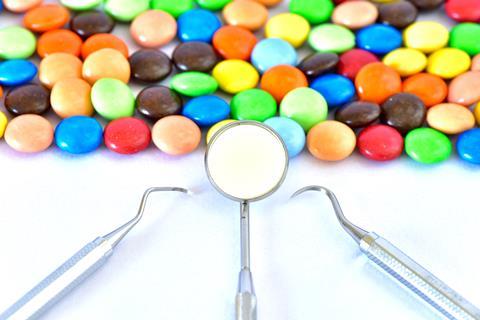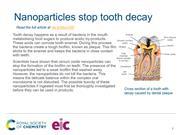Start your lesson with the inorganic chemical compound that can disrupt cavity forming biofilms
Download this
Use the starter slide with your class: rsc.li/

Tooth decay happens as a result of bacteria in the mouth metabolising sugar in our food to produce acidic by-products. These acids can corrode tooth enamel, which is comprised mostly of the calcium phosphate mineral hydroxyapatite. One of the problems is that the bacteria create a tough biofilm, known as plaque, which adheres to the enamel and keeps the bacteria in close contact with teeth.
Scientists have shown that cerium oxide nanoparticles can inhibit the formation of the biofilm on teeth. The presence of the cerium oxide nanoparticles led to a ‘very weak’ biofilm that washed away.
Although nanoparticles prevent microbes from forming adherent biofilms, they do not actually kill the bacteria. This means the delicate balance within the complex oral microbiome is not disturbed. The researchers now plan to test the potential toxicity of the nanoparticles using cell lines of the lower digestive tract.
Find out more about chemistry careers
Read about nanotoxicologist, Vicki who ensures that tiny nanomaterials present in everyday products are safe for consumers to use.
Read the full story in Chemistry World.
Downloads
Cerium oxide nanoparticles starter slide
Presentation | PDF, Size 0.22 mbCerium oxide nanoparticles starter slide
Presentation | PowerPoint, Size 0.3 mb










No comments yet